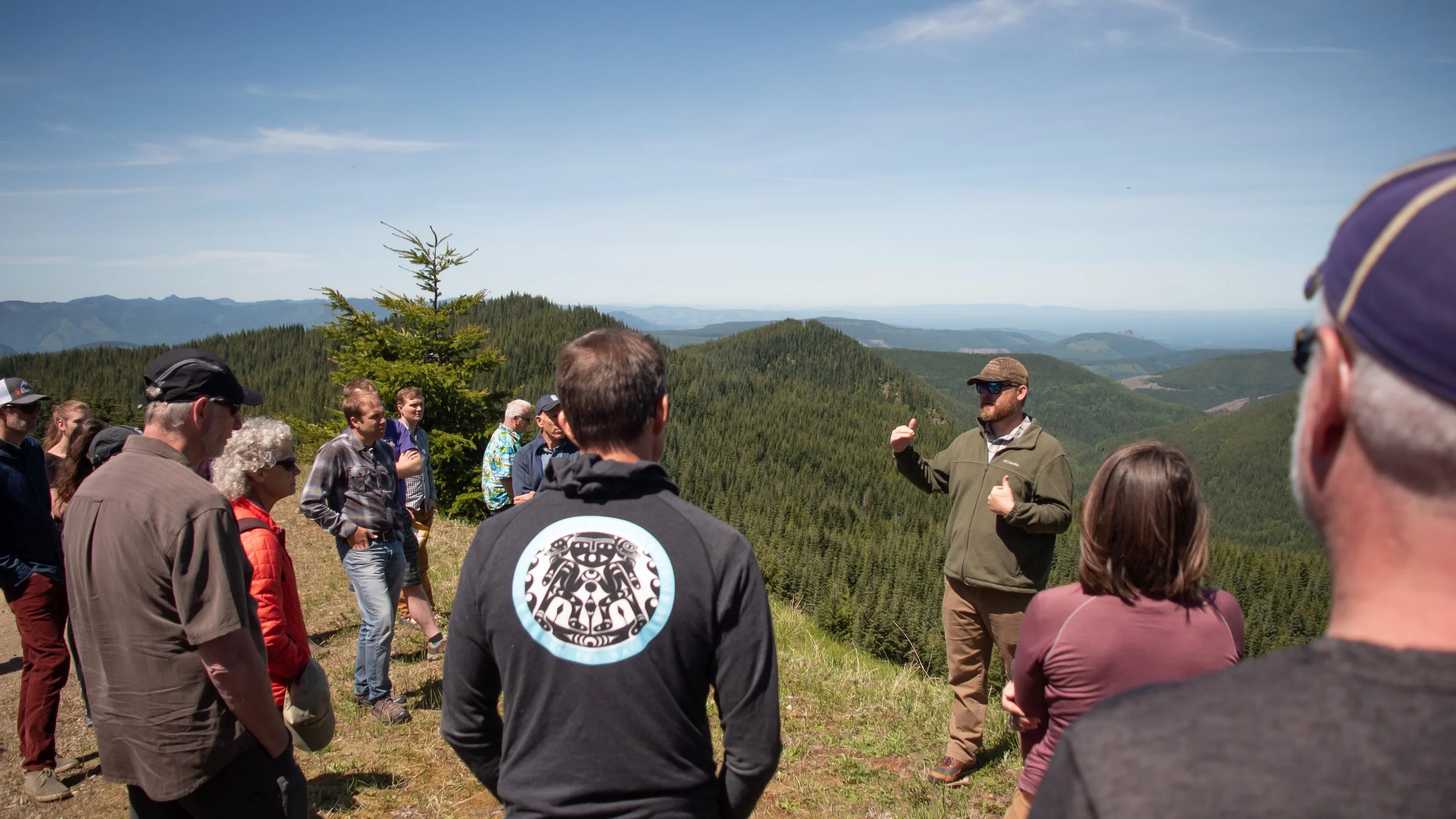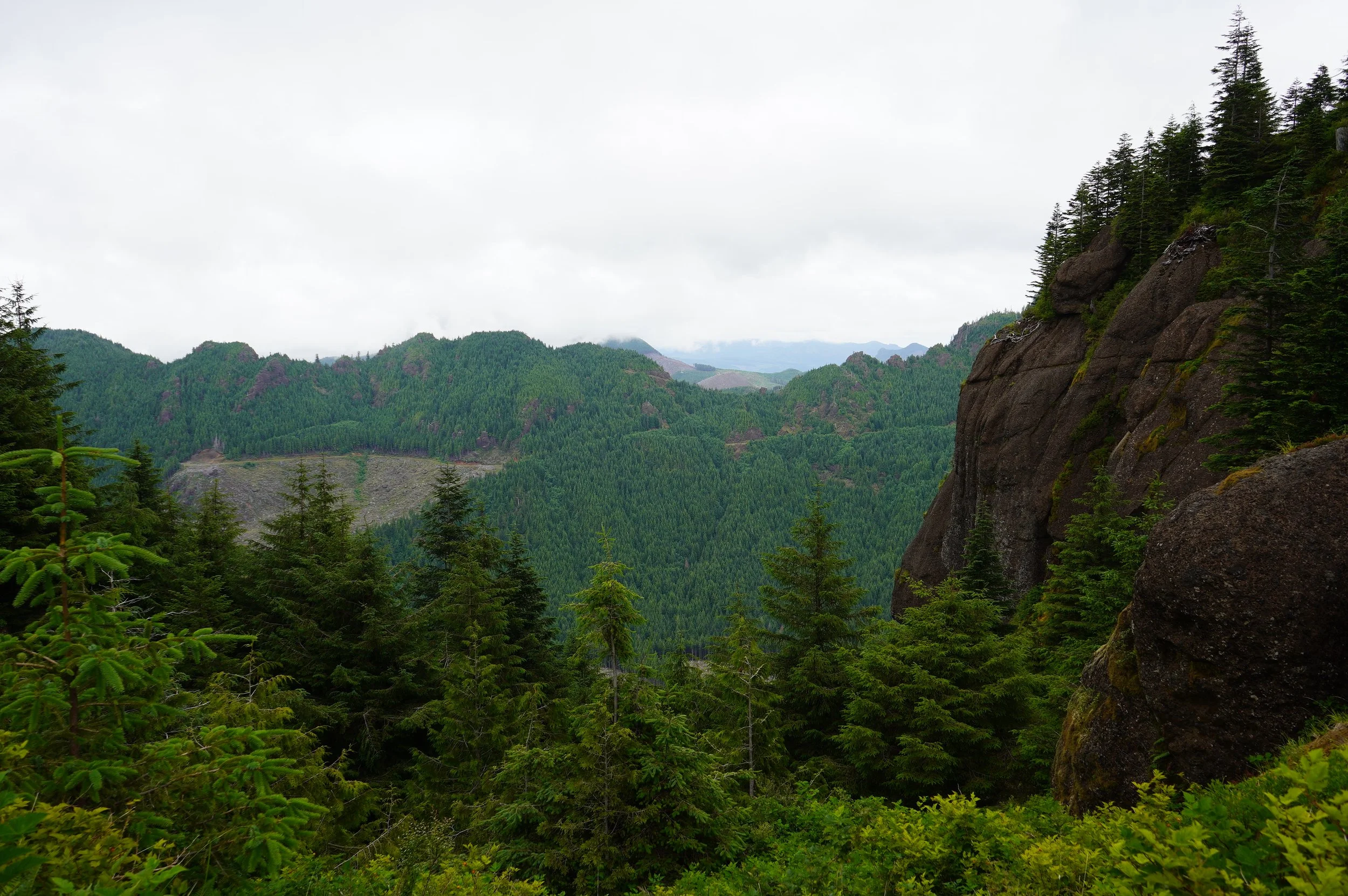Innovative new program in Oregon is protecting drinking water at the source
In 2023, the Oregon legislature approved an innovative new program that helps communities protect drinking water at the source: the forest. For many communities in Oregon, their water comes straight from the forest. When those forested lands are not managed for clean drinking water, it can become costly for a community to build the water treatment facilities necessary to keep their drinking water clean. Protecting the source of the drinking water – the forest – is the most cost effective way for local governments to supply clean drinking water to residents.
State legislators approved the Drinking Water Source Protection Program and funded it for $5 million for the 2023-2025 biennium. Soon, that funding will hit the ground in six communities around the state, projects that the Oregon Watershed Enhancement Board (OWEB) has vetted and approved in Reedsport, Rockaway Beach, Neskowin, The Dalles, Port Orford, and Rhododendron.
"It's thrilling to see local communities in Oregon able to purchase the forests that provide their drinking water," said Daniel Wear, community forests program manager for Sustainable Northwest.
More about the program
OWEB’s Drinking Water Source Protection Program helps local governments protect their source drinking watersheds to ensure reliable access to clean drinking water. Sometimes communities decide to acquire the land outright from willing sellers, or to just acquire specific protections on the land. The program was authorized and fully funded at $5 million in the 2023-2025 Biennium, with support from a bipartisan group of Oregon legislators.
“The real value of legislative work is seen in how it benefits communities,” said Oregon State Rep. Ken Helm. “By protecting and improving our drinking water sources, these projects are creating a more sustainable and secure water future."
"The OWEB Drinking Water Source Protection Program is providing crucial funds today for communities across Oregon to protect and preserve their drinking water sources,” said Oregon State Rep. Mark Owens. “I am proud to support this program because it brings communities and landowners together to ensure Oregonians have safe, clean drinking water for generations to come."
The need exceeds the supply
Communities around the state have submitted more than $25 million in requests for the program, far exceeding the available funding.
A request for a second round of funding is being proposed now in the Oregon legislature as HB 3341 introduced by Rep. Ken Helm, Rep. Mark Owens, and Rep. Cyrus Javadi. If funded, this bill will continue the program with $5 million for the 2025-2027 biennium. A coalition of community groups, including Sustainable Northwest and the Coalition of Oregon Land Trusts, helped advance the legislation through the legislature and are working to secure more funding to meet demand.
“Thank you Rep. Helm and Rep. Owens for championing this program that is vital to helping Oregon communities secure safe and clean drinking water,” said Joe Buttafucco, executive director of the Coalition of Oregon Land Trusts.
The funded projects
City of Reedsport, $1,494,000
The City of Reedsport, located in Douglas County on the Oregon Coast, is working to acquire 333 acres of private forestland from a willing seller in the Clear Lake watershed, the city’s sole drinking water source. Clear Lake’s intact forested habitat supports one of the last unfiltered water treatment systems in Oregon. However, about 38% of the area is managed for intensive timber production, which poses significant risks to the quality and reliability of the city’s drinking watershed. City ownership and stewardship of the watershed will ensure long-term protection of the city’s drinking water. Key partners include Wild Rivers Land Trust, Rural Community Assistance Corporation, and the Coalition of Oregon Land Trusts.
City of Rockaway Beach, $1,422,270
The City of Rockaway Beach, a 1,400-resident community in Tillamook County on the Oregon Coast, is working to acquire 800 acres of priority forest land from a willing seller, including 595 acres in the Jetty Creek watershed, the city’s primary water source. The proposed acquisition includes the lower portion of the watershed, which feeds directly into the city’s water intake facility. The land has historically been managed for timber production. Once acquired, the city will manage the property for watershed protection and water quality, helping the City provide affordable, clean water to customers. The City, current landowner, and area partners have been working towards a collaborative management approach since 2018. Key partners include Sustainable Northwest and North Coast Land Conservancy.
Neskowin Regional Water District, $983,722
The Neskowin Regional Water District serves the community of Neskowin in Tillamook County on the Oregon Coast. The district is working to acquire three parcels totaling 121 acres from landowners in the Hawk Creek Watershed, the community’s only source of drinking water. The properties are currently managed for industrial timber production, which reduces water quality. The proposed property is adjacent to land currently owned by the district. The district will steward district-owned lands in the watershed to protect the quality and reliability of its drinking water. Key partners include the community of Neskowin, North Coast Land Conservancy, Nestucca, Neskowin, & Sand Lake Watersheds Council, MRM Forestry, Rural Community Assistance Corporation, Confederated Tribes of Grand Ronde, and Confederated Tribes of Siletz Indians.
City of The Dalles, $528,813
The City of The Dalles is acquiring 3,600 acres of land adjacent to The Dalles Municipal Watershed from Lupine Forest LLC, an affiliate of The Conservation Fund. The funding awarded through this program will work to leverage an additional estimated $2 million of federal funding. The watershed is the source of 80% of the city's annual water supply, and the property is located immediately upstream from the city's water intake. The land was formerly managed for cattle grazing and industrial forestry. The city will manage the land for forest health and water quality. This project includes the key partners of Columbia Land Trust and the Conservation Fund.
City of Port Orford, $415,735
In 2024, the City of Port Orford acquired 160 acres within the North Fork Hubbard Creek watershed, which supplies the community’s drinking water, and will use funds from the Drinking Water Source Protection Program to repay a loan used to purchase the property. In 2020, the city learned the 160-acre parcel, which is above the city’s water intake and reservoir, was scheduled for timber harvest. The city partnered with The Conservation Fund, who purchased and held the property until the city could apply for a loan from the State through a program that provides low-interest loans for water quality projects. The proposed harvest brought local concern around potential negative impacts to the community’s water supply. The City understood that public ownership and stewardship to protect its drinking water is the most affordable way to continue to provide clean drinking water to its residents. This project includes key partners with Port Orford Watershed Council, The Conservation Fund, Curry Soil & Water Conservation District, Coalition of Oregon Land Trusts, Springboard Forestry, Bandon Dunes Charitable Foundation, and Wild Rivers Land Trust
Rhododendron Water Association, $155,460
Rhododendron Water Association (RWA) is a small water district on the western flanks of Mt. Hood. Rhododendron’s sole water source is Big Henry Creek, primarily located within the Mt. Hood National Forest, except for two privately owned parcels. In 2021, one of the private owners scheduled a timber harvest within the Henry Creek Watershed. Based on the projected harvest location, there was a risk that the harvest would directly impact Rhododendron’s water quality and availability. To ensure their water system remained resilient moving forward, the landowner and RWA developed an agreement to increase the size of the riparian buffer areas – areas next to the creek where no trees would be harvested. This reduces the sediment and turbidity in the creek, making water entering the treatment plant cleaner and less costly to treat. The Rhododendron Water Association used a bridge loan to pay for the agreement, and will use the Drinking Water Source Protection Program funds to repay the remainder of its loan. Sustainable Northwest worked with RWA on this project.











